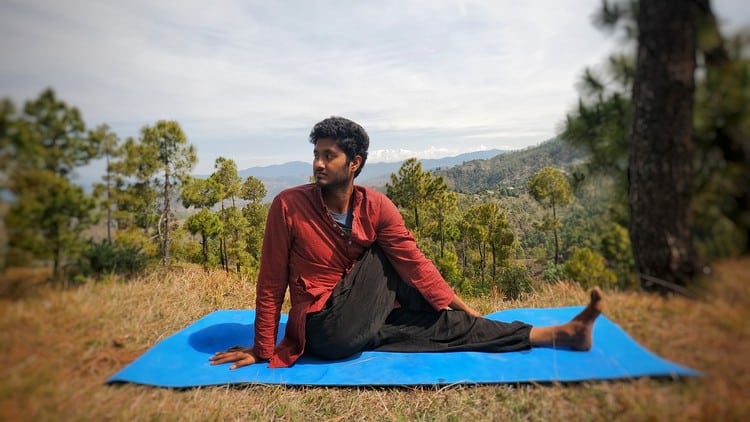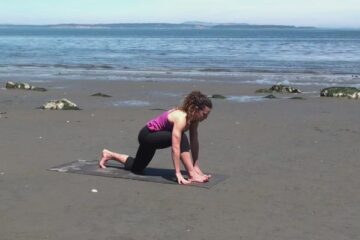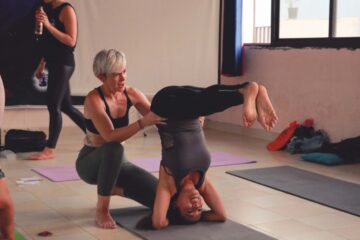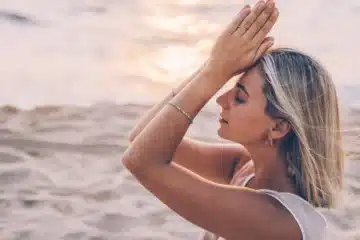Vinyasa Flow sequences are like poetry in motion—a harmonious blend of breath, movement, and intention that create a seamless and dynamic practice on the mat.
Rooted in the traditional Vinyasa style, these sequences offer practitioners a rhythmic and fluid journey that strengthens the body, calms the mind, and nourishes the soul.
Whether you’re a seasoned yogi or a beginner, crafting Vinyasa Flow sequences allows you to tap into your creativity and intuition, weaving together poses and transitions that flow effortlessly from one to the next.
In this article, we’ll explore the art of crafting dynamic Vinyasa Flow sequences and provide insights to help you unlock the flow in your practice.
Understanding Vinyasa Flow Sequences
At its essence, Vinyasa Flow is a practice of moving meditation—a continuous and fluid flow of movement linked with breath.
Vinyasa Flow sequences are characterized by their dynamic and rhythmic nature, with each movement seamlessly transitioning into the next.
These sequences often follow a structured format, with a warm-up, a peak pose or sequence, and a cool-down, but also allow for creativity and spontaneity in the sequencing of poses and transitions.
The key is to create a flow that feels natural and intuitive, allowing the practitioner to move with grace and ease through each posture and transition.
The Elements of Vinyasa Flow Sequences:
- Breath: Breath is the foundation of Vinyasa Flow sequences, serving as the guiding force that propels movement and cultivates mindfulness. Each movement is synchronized with either an inhale or an exhale, creating a seamless flow of energy throughout the practice. By linking breath with movement, practitioners deepen their awareness of the present moment and tap into the transformative power of the breath.
- Movement: Vinyasa Flow sequences are characterized by their continuous and fluid movement, with poses flowing seamlessly from one to the next. Movements are often linked together in a choreographed sequence, creating a sense of rhythm and flow that carries the practitioner through the practice. Transitions between poses are smooth and intentional, allowing for a seamless progression from one posture to the next.
- Intention: Intention is the guiding force behind Vinyasa Flow sequences, shaping the overall theme and focus of the practice. Whether it’s cultivating strength, finding balance, or exploring inner peace, each sequence is crafted with a specific intention in mind. By setting an intention for the practice, practitioners create a sense of purpose and direction that infuses every movement with meaning and significance.
Crafting Dynamic Vinyasa Flow Sequences:
- Start with a Warm-Up: Begin your Vinyasa Flow sequence with a gentle warm-up to prepare the body and mind for movement. Incorporate dynamic movements such as Cat-Cow, Sun Salutations, and gentle twists to awaken the muscles, lubricate the joints, and deepen the breath.
- Build to a Peak Pose: Choose a peak pose or sequence to focus on throughout the practice. This could be a challenging balancing pose, a deep backbend, or an inversion—whatever inspires you and aligns with your intention for the practice. Build towards the peak pose gradually, incorporating preparatory poses and movements that target the relevant muscle groups and create space in the body.
- Incorporate Variations and Modifications: Offer variations and modifications throughout the sequence to make the practice accessible to practitioners of all levels. Encourage students to listen to their bodies and honor their own unique needs and limitations, inviting them to explore different expressions of each pose and transition.
- Create a Seamless Flow: Pay attention to the sequencing of poses and transitions to create a seamless flow of movement throughout the practice. Consider the natural progression of poses and how they flow together harmoniously, allowing the energy to build and flow from one posture to the next.
- End with a Cool-Down: Conclude your Vinyasa Flow sequence with a gentle cool-down to release tension and restore balance in the body. Incorporate calming poses such as Forward Folds, Twists, and Savasana to promote relaxation and integration, allowing practitioners to absorb the benefits of their practice and find a sense of grounding and peace.
Conclusion
Crafting dynamic Vinyasa Flow sequences is both an art and a science—a creative expression of movement and breath that invites practitioners to connect with their inner flow and unlock the full potential of their practice.
Whether you’re teaching a class or practicing on your own, take the time to craft sequences that inspire and uplift, allowing the energy to flow effortlessly from one pose to the next.
With mindful attention to breath, movement, and intention, you can create Vinyasa Flow sequences that nourish the body, calm the mind, and awaken the spirit with every fluid movement.



